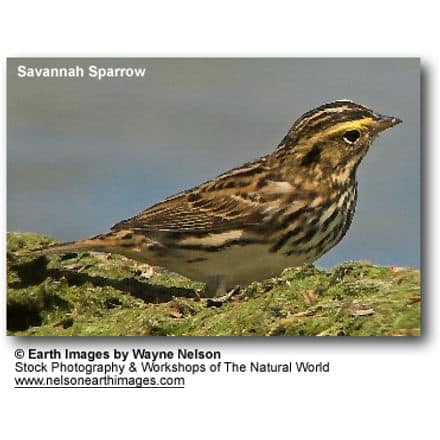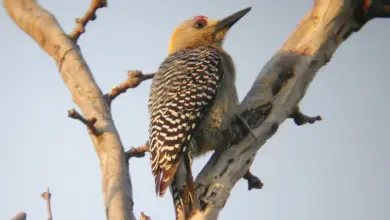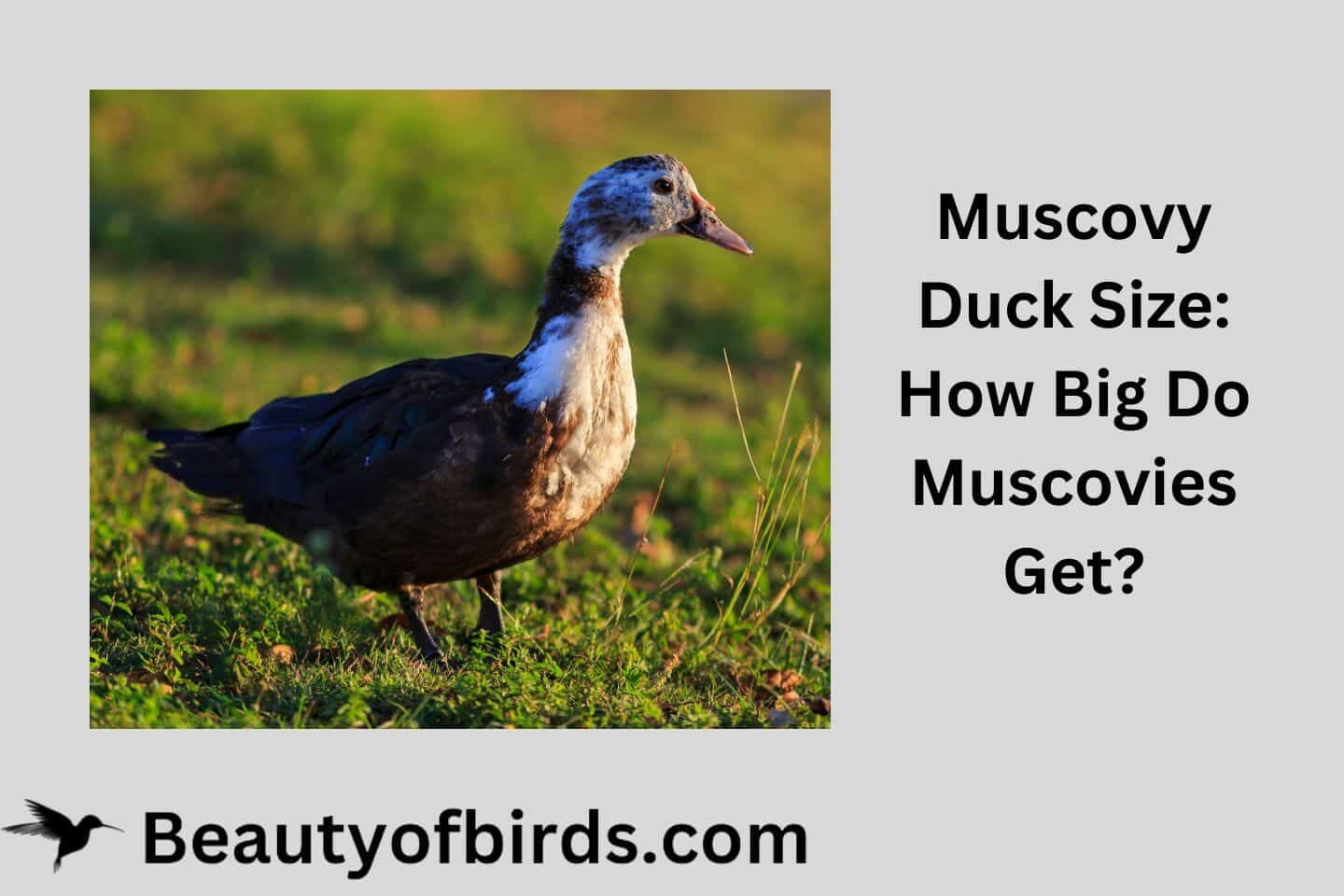Savannah Sparrow (Passerculus sandwichensis)
The Savannah Sparrows, Passerculus sandwichensis, is a small sparrow. It is the only member of the genus Passerculus (Bonaparte, 1838).
This bird was named after Savannah, Georgia where one of the first specimens of this bird was collected.


Distribution / Range
This passerine bird breeds in Alaska, Canada, northern, central and Pacific coastal USA, Mexico and Guatemala.
The Pacific and Mexican breeders are resident, but other populations are migratory, wintering from the southern United States to northern South America. It is a very rare vagrant to western Europe.
This bird was first observed in winter on the dunes near the town of Ipswich, Massachusetts.
Although this bird is generally abundant across its range, some coastal populations depending on salt marsh habitat are declining.
They form flocks in the winter to migrate.

Description
Savannah Sparrow is a very variable species, with numerous races, several of which have been split as separate species at various times. The different forms vary principally in the darkness of the plumage, with Alaskan and interior races the palest, and southern Pacific coastal forms the darkest.
This species has a typically sparrow-like dark-streaked brown back, and whitish underparts with brown or blackish breast and flank streaking. It has yellowish or whitish crown and eyebrow stripes. The cheeks are brown and the throat white.
The Savannah Sparrows proper are very similar and migrant birds can not usually be related to a breeding population with certainty. The resident or partially migratory subspecies are well distinguishable by size and, particularly between groups, coloration.
The Ipswich Sparrow is somewhat larger and paler in colour than other eastern Savannah Sparrows. The breast streaks are narrower and pale brown. Some birds overwinter on the island; others migrate south along the Atlantic coast, usually departing later and returning sooner than mainland birds.
Breeding / Nesting
The breeding habitat is a wide variety of open habitats including grasslands and cultivation. Savannah Sparrows nest on the ground, laying 3-6 eggs in a cup nest sheltered by a clump of grass or other vegetation.
These birds frequently raise three broods in a year.
Some birds interbreed with P. s. savanna in Nova Scotia.
Diet / Feeding
These birds forage on the ground or in low bushes. They mainly eat seeds, but insects are also eaten in the breeding season. The song is mixture of chips and trills. The flight call is a thin seep.

Subspecies
Seventeen subspecies are currently recognized. One was formerly considered a distinct species. Three additional subspecies are not generally accepted.
The subspecies are usually divided into several groups:
- The Savannah Sparrows proper (migratory):
- P. s. labradorius, breeds in Newfoundland, Labrador, and N QuebecP. s. oblitus, breeds in N Ontario and ManitobaP. s. savanna, breeds in the NE USA and adjacent Canada (includes P. s. mediogriseus)P. s. sandwichensis, breeds on the Aleutian Islands and W Alaskan PeninsulaP. s. anthinus, breeds in the remainder of Alaska, south and east to central British Columbia and north of the Great Plains to ManitobaP. s. brooksi, breeds in southernmost British Columbia to northernmost CaliforniaP. s. alaudinus, breeds in coastal northern and central CaliforniaP. s. nevadensis, breeds in the N Great Plains and the Great BasinP. s. brunnescens, breeds from central Mexico south to Guatemala (includes P. s. rufofuscus)
P. s. wetmorei is a doubtful subspecies which may breed in the mountains of Guatemala. It is known from only 5 specimens,collected June 11-17, 1897, in Huehuetenango Department
- The Ipswich Sparrow (formerly considered a distinct species, some post-breedingdispersal)
- P. s. princeps, breeds almost exclusively on Sable Island
- The Large-billed Savannah Sparrows:
- P. s. rostratus, which breed on theGulf Coast of NE Baja California and NW Sonora (some post-breeding dispersal; has distinct mtDNA genotypes)P. s. atratus, resident on the coast of central Sonora to central Sinaloa (resident)
- The Belding’s Savannah Sparrows (resident):
- P. s. beldingi, resident on the Pacific Coast from Morro Bay, California, to El Rosario, Baja CaliforniaP. s. anulus, resident around Sebastián Vizcaíno Bay, Baja CaliforniaP. s. guttatus, resident around San Ignacio LagoonP. s. magdalenae, resident around Magdalena Bay
- The San Benito Savannah Sparrow (resident)
- P. s. sanctorum, Islas San Benitos





